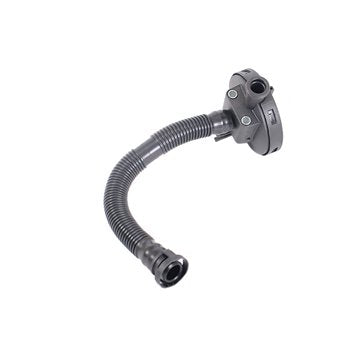How a Clp Engine Can Boost Effectiveness in Various Industries
The arrival of CLP engines notes a significant change in operational performance across numerous sectors, driven by their capacity to optimize gas consumption and decrease downtime. Industries such as manufacturing and logistics stand to get considerably from their durable design and constant power result, which promise to enhance operations and improve performance. As organizations progressively focus on sustainability alongside effectiveness, the duty of CLP engines ends up being much more important. What remains to be seen is exactly how these improvements will shape the future landscape of commercial procedures and their impact on wider financial trends (clp engine).
Overview of CLP Engines
CLP engines, or Continuous Fluid Propellant engines, represent a substantial advancement in propulsion technology, specifically for area applications. These engines use a continuous feed system that allows for the continual expulsion of propellant, leading to enhanced efficiency and efficiency compared to traditional strong or hybrid propulsion systems. By preserving a constant circulation of liquid propellant, CLP engines can achieve more specific thrust control, which is essential for steering spacecraft in different mission circumstances.
The style of CLP engines integrates sophisticated materials and cutting-edge fuel management systems. clp engine. This leads to decreased weight and raised dependability, important variables for long-duration area objectives. Additionally, the continual operation decreases the risk of burning instability, a common difficulty in conventional rocket engines.

Benefits in Manufacturing
The manufacturing of Continual Liquid Propellant (CLP) engines presents a number of noteworthy benefits that boost both efficiency and cost-effectiveness. Among the key benefits is the structured production procedure, which minimizes the intricacy linked with standard propulsion systems. By using liquid propellant, producers can achieve higher accuracy in engine performance, bring about maximized power output and lowered waste.
In addition, CLP engines help with a higher level of modularity, enabling simpler combination right into numerous production lines. This adaptability can significantly reduce preparations and boost total operational adaptability. Making use of CLP modern technology likewise tends to minimize the need for considerable upkeep due to fewer moving parts, which translates right into decreased downtime and operational expenses.

Applications in Logistics
Leveraging Continual Fluid Propellant (CLP) engines in logistics supplies substantial benefits in functional effectiveness and dependability. These engines supply a durable option for numerous transport demands, making it possible for the smooth motion of products throughout huge distances. The fundamental style of CLP engines permits consistent power result, which converts right into smoother and a lot more predictable transportation schedules.
One of the key applications of CLP engines in logistics remains in sturdy freight transportation, where they can drive both ground and airborne lorries. Their capacity to preserve high performance under varying lots problems visit makes sure that shipment timelines are satisfied, consequently improving customer fulfillment. Additionally, CLP engines can be integrated right into automated logistics systems, assisting in real-time tracking and optimizing course planning.
Additionally, the sturdiness of CLP engines decreases maintenance click here to read downtime, permitting logistics business to optimize their functional capabilities. This is specifically helpful in warehousing operations, where performance in handling and transporting items is crucial. As logistics continues to progress, the integration of CLP engines stands for a forward-thinking method that not just improves efficiency but additionally sustains the industry's expanding demands for integrity and speed.
Effect On Energy Effectiveness
How do Constant Fluid Propellant (CLP) engines enhance energy effectiveness in transport? CLP engines utilize a regular flow of liquid gas, optimizing combustion procedures and maintaining a steady thrust outcome. This layout reduces power losses connected with conventional burning engines, where gas delivery can vary and bring about inefficiencies.
The continual operation of CLP engines permits a much more efficient thermal cycle, resulting in greater details impulse contrasted to conventional engines. clp engine. This equates to minimized gas intake for the same amount of job done, significantly reducing functional prices throughout numerous transport sectors, including aviation and maritime sectors
Additionally, the capacity of CLP engines to keep optimum efficiency under differing load conditions reduces the need for frequent velocity and slowdown, better boosting gas performance. Boosted power performance not just adds to set you back financial savings yet also leads to lower greenhouse gas emissions, aligning with click to read international sustainability objectives.
Future Trends and Innovations
Arising improvements in Constant Liquid Propellant (CLP) engine innovation guarantee to reinvent the landscape of transport effectiveness and sustainability. As industries pivot toward greener choices, CLP engines stand at the center, incorporating ingenious materials and layout techniques that boost performance while lessening environmental impact.
Among one of the most encouraging patterns is the adoption of crossbreed systems that incorporate CLP engines with renewable resource resources. This harmony can maximize fuel intake and decrease emissions, lining up with worldwide sustainability goals. Innovations in computational liquid dynamics (CFD) are promoting the style of even more aerodynamically effective engines, leading to reduced drag and enhanced fuel effectiveness.
Additionally, the growth of wise monitoring systems is readied to enhance operational performances. These systems take advantage of information analytics and IoT innovation to maximize engine performance in real-time, making sure that the engines operate within their most effective parameters.
As research study remains to check out different propellant formulations-- such as biofuels and synthetic gas-- the future of CLP engines looks promising. By taking advantage of these innovations, markets can not just enhance their performance but likewise add significantly to a cleaner, a lot more lasting future in transport.
Conclusion
To conclude, CLP engines stand for a significant improvement in efficiency across numerous sectors. Their ability to optimize fuel usage and lower functional costs, combined with a constant feed system, improves power output and operational dependability. The combination of innovative products and less relocating components minimizes maintenance requirements, while alignment with sustainability goals placements CLP engines as a pivotal technology for the future. Continued development in this field promises additional enhancements in effectiveness and environmental performance.